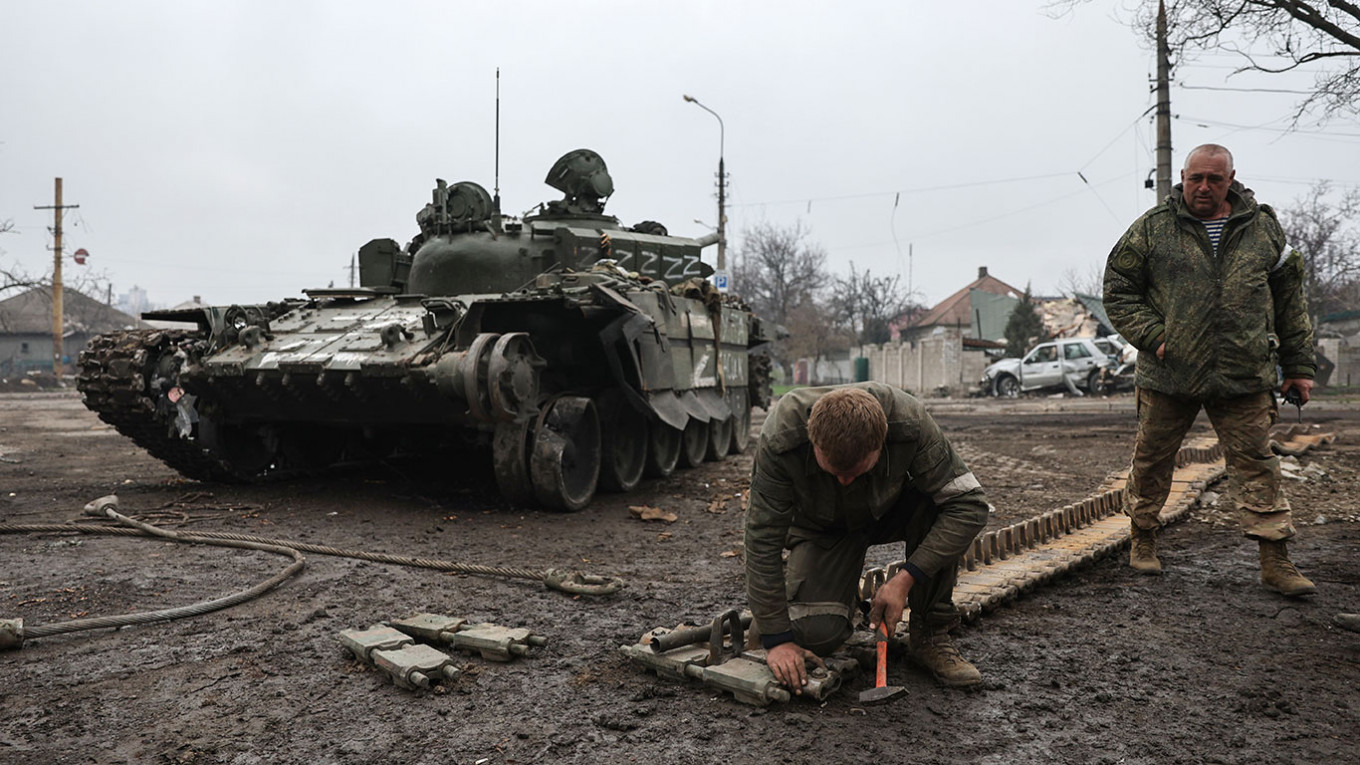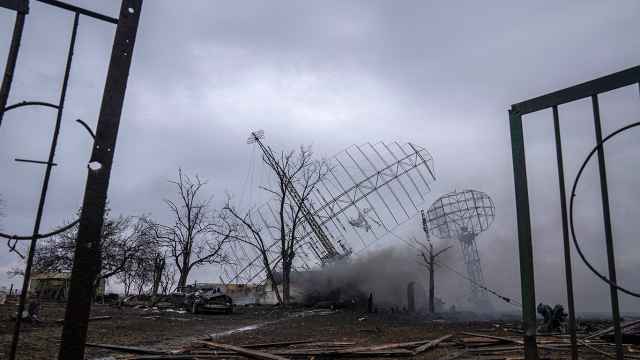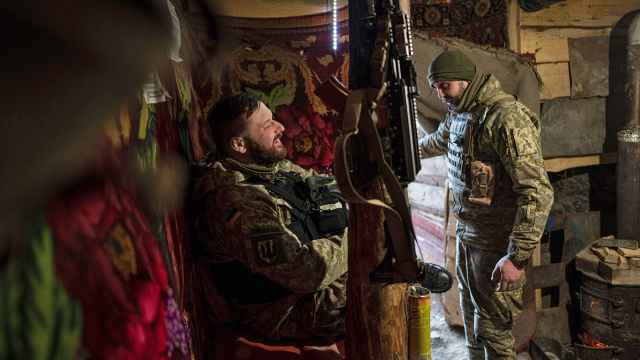A weekend buildup of Russian troops in the eastern Ukrainian city of Izyum was yet another sign of an upcoming Russian offensive in what appears to be the opening maneuvers of a more bloody phase of the war, according to analysts.
Having dispersed from both sides of the Dnieper river north of Kyiv earlier this month, Russian troops appear to be planning a “pincer movement” down from Izyum in the north, and up from Mariupol in the south, in an attempt to push Ukrainian forces out of the Donbas region and deliver a key victory to Russian President Vladimir Putin ahead of May 9 when Russia marks the Soviet defeat of Nazi Germany.
But experts warn that a depleted Russian army struggling with morale problems, Ukrainian counterattacks and supply issues, may fail to achieve its ambitious goals.
“The Ukrainians have the advantage of being on the defensive,” said Robert Bell, a former NATO official and professor at Georgia Tech University, who added that attackers traditionally need a 3:1 ratio over defenders to advance successfully.
Ukraine has recently drafted up to 20,000 troops, and with Western supplies of air-defense systems, anti-tank missiles and ammunition, looks able to survive a war of attrition.
Despite Russian troops encircling the city of Mariupol shortly after the beginning of the war, they have made little headway along the Izyum axis because of issues with supply and morale, according to a report published Monday by the Institute for the Study of War.
Ukrainians remain in heavily fortified positions to the west of the line of contact with separatist forces that has been in place since 2015, explained Bell.
“The plan of the Russians is to bring pincer movements down from the north and up from the south in an attempt to encircle Ukrainian forces and get beyond the line of contact,” he said.
The offensive will attempt to utilize Russia’s numerical advantage of heavy military equipment, tanks, armored vehicles and air power, experts believe.
While Russia far outguns its pro-Western neighbor, its reserves of men and equipment have taken a considerable hit since the beginning of the invasion.
Russia has lost more than 510 tanks, over 2,000 other armored vehicles and 4 naval vessels since the beginning of its invasion, according to Oryx, an intelligence blog that documents Russia's military losses using open source analysis. Much of this hardware was destroyed in Ukrainian ambushes and drone strikes.
Military reversals are likely to have a significant impact on Russian morale, according to the Institute for the Study of War.
A major defeat for the Kremlin last week came with the sinking of the flagship of Russia’s Black Sea fleet, the missile cruiser Moskva.
While Russian forces regroup ahead of the anticipated offensive, Ukrainian troops have been using the breathing space as an opportunity to recapture territory.
Ukraine seized the Kharkiv region towns of Bazaliyivka and Lebiazhe, as well as part of Kutuzivka, local governor Oleh Sinyehubov said Sunday. If confirmed, this means Russian supply lines between the Russian city of Belgorod and Izyum have been severed.
With little left in reserve, General Alexander Dvornikov — the man reportedly set to lead Russia’s next phase of the war — is faced with a difficult task. Dvornikov was dubbed the “butcher of Syria” for his use of cluster munitions in civilian areas of the Middle Eastern country, and he may also have to be prepared for high casualties in Ukraine.
Recruiting more conscripts for the Russian army is already underway in the separatist-held areas of eastern Ukraine, according to Nikolaus von Twickel, a former OSCE staff member who researches the Donbas region.
“The separatists are desperately trying to recruit new men,” said Von Twickel.
These drafts would go some way toward mitigating Russia’s current troop shortages, but are unlikely to be a long-term answer, according to experts. Other solutions to the manpower issues facing the Kremlin include a full-scale mobilization or the deployment of more conscripts to Ukraine — but these would take time to implement and would carry greater political costs.
The upcoming fighting in eastern Ukraine is likely to involve the widespread use of tanks and heavy machinery on sparse, flat plains.
As a result, some, including top U.S. General Mark Milley, believe the fighting in eastern Ukraine could go on for years.
“If Milley is right, and this drags on for months or years, then it could see tens of thousands [of deaths] on each side,” Bell said.
A Message from The Moscow Times:
Dear readers,
We are facing unprecedented challenges. Russia's Prosecutor General's Office has designated The Moscow Times as an "undesirable" organization, criminalizing our work and putting our staff at risk of prosecution. This follows our earlier unjust labeling as a "foreign agent."
These actions are direct attempts to silence independent journalism in Russia. The authorities claim our work "discredits the decisions of the Russian leadership." We see things differently: we strive to provide accurate, unbiased reporting on Russia.
We, the journalists of The Moscow Times, refuse to be silenced. But to continue our work, we need your help.
Your support, no matter how small, makes a world of difference. If you can, please support us monthly starting from just $2. It's quick to set up, and every contribution makes a significant impact.
By supporting The Moscow Times, you're defending open, independent journalism in the face of repression. Thank you for standing with us.
Remind me later.







